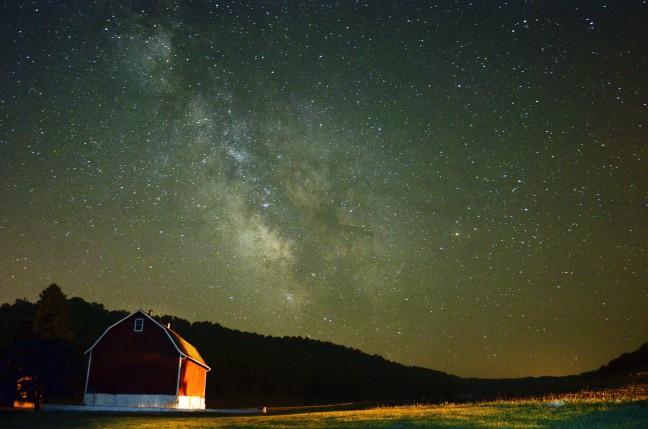Seeking insight into the origins of our universe, the James Webb Space Telescope boasts a whopping 6.5-meter diameter mirror that reaches out to see the depths of the universe. Orbiting nearly one million miles from the Earth, the equipment is protected from the heat of the sun by a shield the size of a tennis court so the telescope can operate at temperatures as low as -370 degrees Fahrenheit.
Over 30 years, since discussions began surrounding the next big space telescope expedition beyond the Hubble space telescope, the James Webb Space Telescope launched Dec. 25, and it reached its final orbiting location Jan. 24, where it will aid researchers for a lifespan of five to 10 years.
Assistant Professor for the Department of Astronomy Michael Maseda will get the privilege to be a part of the first data collection endeavors with the JWST. He said this project is the culmination of years of technological advancements.
“So many people have been waiting for it because James Webb is offering us capabilities to answer really some of the most fundamental questions we have about the universe,” Maseda said. “I think one of the things that makes it so special, in addition to the fact that it’s bigger and better and everything, is that it has the ability to answer questions in a lot of different fields.”
Because of the immense size of JWST, the equipment needed to be light and foldable so it could efficiently launch in a rocket, according to Maseda. After launch, the telescope had to unfold itself for operation — a process that, while successful, stressed researchers involved due to the high stakes of failure in the depths of space.
Successfully launched, unfolded and nestled in orbit, JWST still has to go through several steps before it can become fully operational for data collection, Maseda said.
The JWST is equipped with four different scientific instruments, which NASA licensed to varying teams across the world to design. Maseda said the teams that designed the instruments will get early access to the scientific operations so they can give a platform for future researchers to build off.
“I feel very lucky and very privileged to be in a position to use the telescope so early on,” Maseda said. “It’s really astounding … I’m very optimistic for the future. I’m just excited to be a part of the ride for James Webb and that in the future, we’ll be able to do things that we could only dream of now.”
Because light moves at a fixed speed, seeing further into the universe is seeing further back in time — with JWST’s capabilities, Maseda is confident researchers will be able to unravel mysteries of the past, like when the first galaxies in the universe formed. Additionally, the telescope will help understand the composition of other Earth-like planets in distant galaxies.
Beyond answering these critical questions about the universe, Maseda said the significance of the telescope comes in the technological advancements needed to make this whole project possible.
“It’s decades of technological innovation by people across the world, multiple different aerospace contractors in the U.S., space agencies like NASA, Canadian Space Agency, European Space Agency, universities as well,” Maseda said. “So it’s really a huge, in many ways, global effort to develop all of this, and it is simply not something that we’ve ever had before.”
Maseda will get the opportunity to be involved in nine different projects in the early stages of JWST, but many other researchers at the University of Wisconsin and across the globe are itching to kick off their projects. This marvel of engineering has poised scientists to better understand our universe and apply the new knowledge and technology to society.


